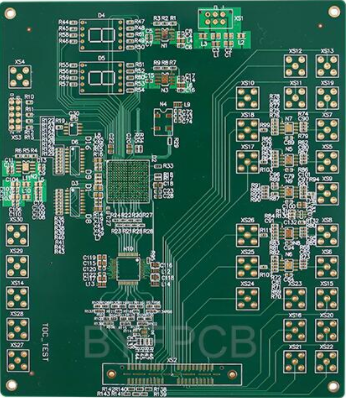On the basis of comprehensive consideration of signal quality, EMC, thermal design, DFM, DFT, structure, safety regulations, etc., the components are placed on the board reasonably. --PCB layout
In addition to special requirements, all component pad traces must meet thermal design requirements. --General Principles of PCB Outlet
It can be seen that in PCB design, whether it is layout or wiring, engineers should consider and meet the requirements of thermal design.
What are the requirements for PCB thermal design
The importance of thermal design
The electrical energy consumed by electronic equipment during operation, such as radio frequency power amplifiers, FPGA chips, and power products, in addition to useful work, most of which is converted into heat and dissipated. The heat generated by the electronic equipment causes the internal temperature to rise rapidly. If the heat is not dissipated in time, the equipment will continue to heat up, the device will fail due to overheating, and the reliability of the electronic equipment will decrease. SMT increases the installation density of electronic equipment, reduces the effective heat dissipation area, and the temperature rise of the equipment seriously affects the reliability. Therefore, the research on thermal design is very important.
PCB thermal design requirements
1) When arranging components, temperature sensitive components other than temperature detection components should be placed close to the air inlet, and upstream of the air duct of components with high power and high heat, and as far away as possible from components with high heat. In order to avoid the influence of radiation, if it cannot be far away, the device can also be separated by a heat shielding plate (polished metal thin plate, the smaller the blackness, the better).
2) Place heat-generating and heat-resistant components near the air outlet or on the top, but if they cannot withstand higher temperatures, they should also be placed near the air inlet, and pay attention to rising in the air with other heat-generating components and heat-sensitive components as much as possible. Stagger the position in the direction.
3) High-power components should be distributed as much as possible to avoid concentration of heat sources; components of different sizes should be arranged as evenly as possible, so that the wind resistance is evenly distributed and the air volume is evenly distributed.

4) The vents should be aligned with devices with high heat dissipation requirements as much as possible.
5) The tall components are placed behind the low ones, and the long direction is arranged in the direction with the least wind resistance to prevent the air duct from being blocked.
What are the requirements for PCB thermal design
6) The radiator configuration should facilitate the circulation of heat exchange air in the cabinet. When the heat is exchanged by natural convection, the length direction of the radiating fins is perpendicular to the ground direction. When using forced air to dissipate heat, it should be in the same direction as the airflow.
7) In the direction of air circulation, it is not advisable to arrange multiple radiators at a close distance in the longitudinal direction. Because the upstream radiator separates the air flow, the surface wind speed of the downstream radiator will be very low. It should be staggered, or the radiating fins should be spaced apart.
8) There should be an appropriate distance between the radiator and other components on the same circuit board, and it is advisable to calculate by heat radiation so as not to increase the temperature unsuitably.
9) Use PCB to dissipate heat. For example, the heat is dissipated through a large area of copper (consider opening a solder mask), or ground connection vias are used to guide the plane layer of the PCB board, and the entire PCB board is used to dissipate heat.